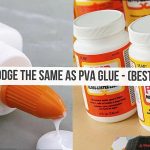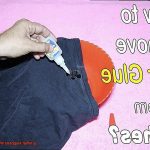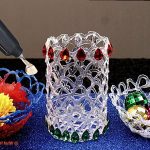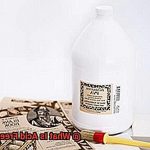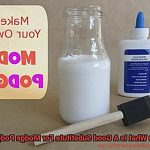Our furry friends are no strangers to finding themselves in bizarre situations. But what happens when your mischievous pup mistakes a glue trap for a tasty treat? It may sound funny at first, but trust me, it’s no laughing matter.
In this blog post, we’ll uncover the potential consequences that both you and your four-legged buddy might face after this sticky mishap.
From discomfort and distress to possible long-term health issues, understanding the aftermath of your dog eating a glue trap is crucial.
So, let’s dive into this messy situation and figure out how to handle it with care.
What are Glue Traps?
Contents
- 1 What are Glue Traps?
- 2 Signs and Symptoms of a Dog Eating a Glue Trap
- 3 Immediate Action to Take if a Dog Eats a Glue Trap
- 4 Veterinary Treatment for Dogs Who Have Eaten a Glue Trap
- 5 Prevention Tips to Avoid Dogs Eating Glue Traps
- 6 Alternatives to Glue Traps for Pest Control
- 7 Pet-Friendly Environment
- 8 Conclusion
Glue traps, also referred to as sticky traps or adhesive traps, are widely utilized as a pest control method for insects, rodents, and small animals. While they offer a simple and cost-effective solution, glue traps have become a topic of controversy due to concerns regarding animal cruelty. In this article, we will delve into the purpose and mechanism of glue traps, explore their advantages and disadvantages, and discuss the potential dangers associated with accidental consumption by dogs.
Purpose and Mechanism:
Glue traps are designed to immobilize pests by capturing them on a sticky surface. These traps consist of flat boards or sheets coated with a powerful adhesive substance. Upon contact with the trap, animals or insects become firmly stuck due to the highly viscous and tacky nature of the adhesive. Strategically placed along walls, in corners, or in areas frequented by pests, glue traps effectively hinder their movement.
Advantages:
- Simplicity and ease of use: Glue traps require no electricity or complex mechanisms, making them accessible to all.
- Cost-effectiveness: Compared to other pest control methods, glue traps are relatively inexpensive.
- Versatility: Available in various sizes and forms, glue traps cater to specific pests, ranging from insects to rodents and even reptiles.
Disadvantages:
- Animal welfare concerns: Glue traps may inadvertently capture pets and beneficial wildlife, inflicting distress and suffering.
- Inhumane demise: Once ensnared, pests may endure extended periods of suffering before dying from dehydration or exhaustion.
Dangers if a Dog Ingests a Glue Trap:
Accidental consumption of a glue trap by a dog can pose serious risks. The adhesive substance within the trap can cause blockages within the dog’s digestive system, leading to symptoms such as vomiting, diarrhea, abdominal pain, and loss of appetite.
Actions to Take if a Dog Ingests a Glue Trap:
- Assess the situation: Evaluate whether the dog displays signs of distress. In the presence of severe symptoms, immediately contact a veterinarian.
- Seek veterinary advice: Even if the dog appears unharmed initially, consulting a veterinarian is crucial to prevent potential complications.
- Induce vomiting (under professional guidance): In certain cases, the veterinarian may recommend inducing vomiting to expel the glue trap from the dog’s system.
- Surgical intervention: If the adhesive has caused an obstruction, endoscopy or surgery may be necessary for its removal.

Prevention is Key:
To avoid such incidents, it is essential to keep glue traps out of pets’ reach and place them in inaccessible areas. Consider utilizing pet-friendly pest control methods, such as humane traps or natural deterrents.
Signs and Symptoms of a Dog Eating a Glue Trap
Our furry friends bring joy to our lives, but accidents can happen, and sometimes our curious canines end up getting into things they shouldn’t. One such hazard is a glue trap. In this article, we will discuss the signs and symptoms of a dog eating a glue trap, helping you identify potential issues early on and take necessary steps to ensure your pet’s well-being.
Signs and Symptoms:
- Gastrointestinal Distress: Keep an eye out for vomiting or diarrhea, as these are common signs of a dog ingesting a glue trap. The adhesive can irritate the digestive system, causing discomfort and these unpleasant symptoms.
- Difficulty Breathing: Swallowing a glue trap or its adhesive material can obstruct the dog’s airway, leading to respiratory distress. Watch for coughing, wheezing, or choking sounds and seek immediate veterinary assistance.
- Excessive Salivation: Glue traps contain sticky substances that make your dog’s mouth uncomfortable. Excessive drooling or thicker drool than usual could indicate your pet has consumed a glue trap.
- Pawing at the Mouth: Dogs instinctively try to remove foreign objects from their mouths. Continuous pawing at the mouth or face may indicate discomfort caused by the adhesive material.
- Lethargy and Loss of Appetite: Dogs that have ingested a glue trap may show signs of lethargy and decreased appetite. Discomfort can make them feel unwell, resulting in reduced energy levels and reluctance to eat.
- Behavioral Changes: Pain and discomfort can cause dogs to exhibit changes in behavior such as irritability, restlessness, or signs of anxiety. Pay attention to any unusual behavior patterns after potential glue trap ingestion.
While glue traps serve a purpose in pest control, they pose a risk to our beloved pets if not handled and disposed of properly. If you suspect that your dog has ingested a glue trap or is showing any concerning symptoms, contact your veterinarian immediately.
Remember, early intervention is crucial in ensuring the well-being and safety of our furry companions.
Immediate Action to Take if a Dog Eats a Glue Trap
Discovering that your mischievous pup has devoured a glue trap can be a distressing moment for any pet owner. However, it is crucial to remain calm and take immediate action to ensure the safety and well-being of your furry friend. Here are the steps you should follow:
- Stay calm: Although it’s natural to feel panicked, maintaining a calm demeanor is vital. Panicking can lead to hasty decisions or actions that may inadvertently harm your dog.
- Assess the situation: Determine if your dog has actually ingested any part of the glue trap. Time is of the essence, so swift action is necessary if they have.
- Contact a professional: Reach out to your veterinarian or a pet poison control hotline without delay. They possess the expertise needed to provide guidance based on your specific situation. Ensure you provide accurate details about the glue trap, such as its brand name and ingredients.
- Follow professional advice: If your veterinarian suggests inducing vomiting, only do so under their guidance. Regurgitating certain substances or materials can be harmful, so it’s essential to follow their instructions meticulously.
- Consider activated charcoal: If advised by your vet, administering activated charcoal can help absorb any toxins or harmful substances present in the glue trap.
- Monitor for distress: Keep a vigilant eye on your pup for any signs of distress, including difficulty breathing, excessive drooling, vomiting, or unusual behavior. Promptly report these symptoms to your veterinarian.
- Don’t remove the trap yourself: Although it may be tempting to try and extract the glue trap from your dog’s mouth or throat, it’s best to leave this task to the professionals. Attempting to do so without proper guidance can cause further harm or damage.
- Keep a record: Maintain a detailed record of the incident, including any observed symptoms and actions taken. This information will be invaluable when seeking further veterinarian advice or treatment.
Veterinary Treatment for Dogs Who Have Eaten a Glue Trap
Your furry best friend has managed to get their paws on a glue trap. It’s a sticky situation, but fear not, there are veterinary treatment options available to help your pup through this ordeal.
The first step is to take a deep breath and remain calm. Panicking will only make your dog more anxious. Remember, you’ve got this under control. The next step is to contact your veterinarian immediately. They are the experts and will be able to provide guidance based on the specific situation.
In some cases, the vet may recommend inducing vomiting. This can help expel the glue trap before it causes any major issues. However, it’s important to note that inducing vomiting should only be done under veterinary supervision. Don’t try this at home, folks.
If the glue trap has made its way past the stomach and into the intestines, an endoscopic procedure may be necessary. This involves using a long, flexible tube with a camera to remove the trap from your dog’s digestive system. Think of it as a rescue mission for your pup’s tummy.
In more severe cases where the glue trap is causing a blockage or other complications, surgery may be required. Rest assured that veterinarians are skilled in these procedures and will do everything they can to help your furry friend.
After any necessary procedures, your veterinarian will closely monitor your dog’s condition. They may administer supportive care such as intravenous fluids, pain medication, and antibiotics to prevent infection. Your dog will be in good hands throughout the recovery process.
While dealing with this sticky situation, it’s important to remember that prevention is key. Keep glue traps out of reach from your curious canine companion and consider alternative methods for pest control. It’s better to be safe than sorry.
Prevention Tips to Avoid Dogs Eating Glue Traps
Our beloved dogs have an innate curiosity that often leads them into trouble. One such danger is the potential ingestion of glue traps, which can pose serious risks to their health. As responsible pet owners, it is our duty to take preventive measures to ensure our furry friends stay safe. In this article, we will discuss some essential prevention tips to avoid dogs eating glue traps and keep our pets out of harm’s way.
Keep Glue Traps Out of Reach:
The first and most crucial step is to keep glue traps away from your dog’s reach. These sticky traps should be placed in high shelves or cabinets where your pet cannot access them. If you have a larger dog that can reach high places, store the traps in a secure container with a tight-fitting lid. Remember, prevention starts with restricting access.
Explore Pet-Safe Alternatives:
Consider using alternative pest control methods that do not involve glue traps. Look for pet-safe options like electronic pest repellents or natural deterrents such as peppermint oil. These alternatives effectively keep pests away without putting your furry friend at risk. By choosing safer alternatives, you eliminate the chance of accidental ingestion or entanglement.
Regularly Inspect Your Home:
To avoid using glue traps altogether, it’s important to regularly inspect your home for signs of pests and take immediate action if you spot any. By keeping your home pest-free, you reduce the need for glue traps and eliminate the risk of your dog coming into contact with them. Regular inspections should become a part of your routine to create a safe environment for your pet.
Choose Pet-Friendly Glue Traps:
If you must use glue traps, opt for ones specifically designed for indoor use and labeled as pet-friendly. These traps are made with less adhesive or have a protective cover that makes it harder for pets to get stuck. Always read the labels carefully before purchasing any glue trap to ensure the safety of your furry friend. Remember, not all traps are created equal.
Supervise and Train Your Dog:
When glue traps are present in your home, closely supervise your dog’s behavior and intervene if they show any interest or attempt to approach the traps. Teaching your dog basic obedience commands like “leave it” or “drop it” can redirect their attention away from the traps and prevent potential accidents. Consistent training creates a safer environment for your dog.
Alternatives to Glue Traps for Pest Control
Glue traps, once a popular choice for pest control, come with risks such as accidental ingestion by pets. Fortunately, there are several alternatives that are both safe and effective. In this article, we will explore these alternatives in detail, including mechanical traps, natural repellents, electronic pest control devices, and Integrated Pest Management (IPM) strategies.
Mechanical Traps:
One common alternative to glue traps is the use of mechanical traps. These traps rely on bait or attractants to lure pests into the trap, capturing them without the need for adhesive substances. Snap traps, live traps, and multiple-catch traps are effective types of mechanical traps.
Snap traps swiftly kill pests upon activation, making them ideal for small infestations. Live traps capture pests alive, allowing for their safe release elsewhere. Multiple-catch traps are particularly useful for larger infestations as they can capture multiple pests at once.
Natural Repellents:
Another effective alternative to glue traps is the use of natural repellents. Many pests are deterred by specific scents or substances, making natural repellents an eco-friendly option. For example, peppermint oil repels rodents while citrus peels deter ants. These natural repellents can be applied around infestation-prone areas or used in combination with other pest control methods.
Electronic Pest Control Devices:
Electronic pest control devices emit ultrasonic waves that pests find unpleasant, causing them to flee the area. While not effective for all pests, these devices can be a valuable addition to a comprehensive pest control plan. It’s important to note that they should be used alongside other methods for optimal results.
Integrated Pest Management (IPM):
Implementing an IPM approach is another alternative to glue traps. IPM focuses on prevention and minimizing pesticide use. This approach includes practices such as sealing entry points, removing food sources, and maintaining cleanliness to discourage pests from infesting a space. By following IPM strategies, the need for glue traps or other pest control methods can be significantly reduced.
Consult a Professional:
To determine the best alternative to glue traps for your specific situation, consult with a professional pest control expert or veterinarian. They can offer guidance on effective and safe methods to control pests without endangering your pets.
Pet-Friendly Environment
In this blog post, we will delve into the significance of a pet-friendly environment and offer practical strategies to prevent accidents or injuries. So, let’s embark on this journey of creating a haven for our beloved companions.
Why creating a pet-friendly environment is crucial:
Ensuring their well-being: A pet-friendly environment is the cornerstone of our furry friends’ physical and mental well-being. It encompasses providing them with the utmost comfort, stimulation, and security they need to flourish.
Strategies to prevent accidents or injuries:
- Hazard-proof your home: Our curious pets have an uncanny ability to find trouble. To keep them safe, eliminate any potential hazards within their reach. Securely store cleaning products, medications, toxic plants, or any other harmful substances in cabinets or high shelves.
- Keep an eye on small objects: Dogs possess an insatiable chewing habit that can lead to choking hazards. Regularly scour your home for minute items such as buttons, coins, or children’s toys that your pet may mistakenly ingest.
- Choose pet-safe products: Embrace environmentally friendly and non-toxic cleaning products, as harsh chemicals can wreak havoc on both pets and humans alike. Likewise, opt for pet-safe plants that won’t cause harm if nibbled on during moments of curiosity.
- Provide appropriate toys and activities: Engage your pets with toys and activities tailored to their needs, stimulating their minds and sating their physical energy. Not only does this stave off boredom, but it also curbs the likelihood of destructive behavior.
- Secure outdoor spaces: If you’re fortunate enough to have a backyard or garden, ensure it is adequately fenced to discourage your pets from wandering off or encountering dangers like toxic plants or sharp objects.
- Regular veterinary care: Consistent check-ups with your veterinarian are vital to promptly detect and address any potential health issues before they escalate. Vaccinations, parasite prevention, and dental care all play crucial roles in safeguarding your pet’s well-being.
9-Xu8PNvkKA” >
Conclusion
To sum up, if your dog happens to consume a glue trap, immediate action is crucial to safeguard their well-being. Glue traps can pose severe risks to dogs, triggering gastrointestinal distress, breathing difficulties, excessive drooling, and behavioral changes. Here’s how to handle this situation with utmost care:
- Assess the situation: Determine whether your dog has actually ingested any part of the glue trap and evaluate the severity of their symptoms.
- Seek professional assistance: Reach out to your veterinarian or a pet poison control hotline for expert guidance tailored to your specific circumstances.
- Adhere to professional advice: If advised by your vet, follow their instructions on inducing vomiting or consider alternative treatments like activated charcoal.
- Stay vigilant for signs of distress: Keep a watchful eye on your furry companion for any distressing indicators and promptly report concerning symptoms to your veterinarian.
Preventing such incidents in the future is paramount by ensuring glue traps are kept securely out of pets’ reach and exploring alternative pest control methods that are pet-friendly. Regularly inspecting your home for pests and utilizing mechanical traps, natural repellents, electronic pest control devices, or implementing Integrated Pest Management (IPM) strategies can serve as effective alternatives to glue traps.
Crafting a pet-friendly environment is also essential in averting accidents or injuries. Safeguard your home against hazards, keep small objects inaccessible, employ pet-safe products, provide suitable toys and activities, secure outdoor spaces diligently, and ensure regular veterinary care – all vital steps in creating a safe haven for your beloved four-legged friend.
Remember that prevention holds the key when it comes to protecting our pets from potential dangers like glue traps.


